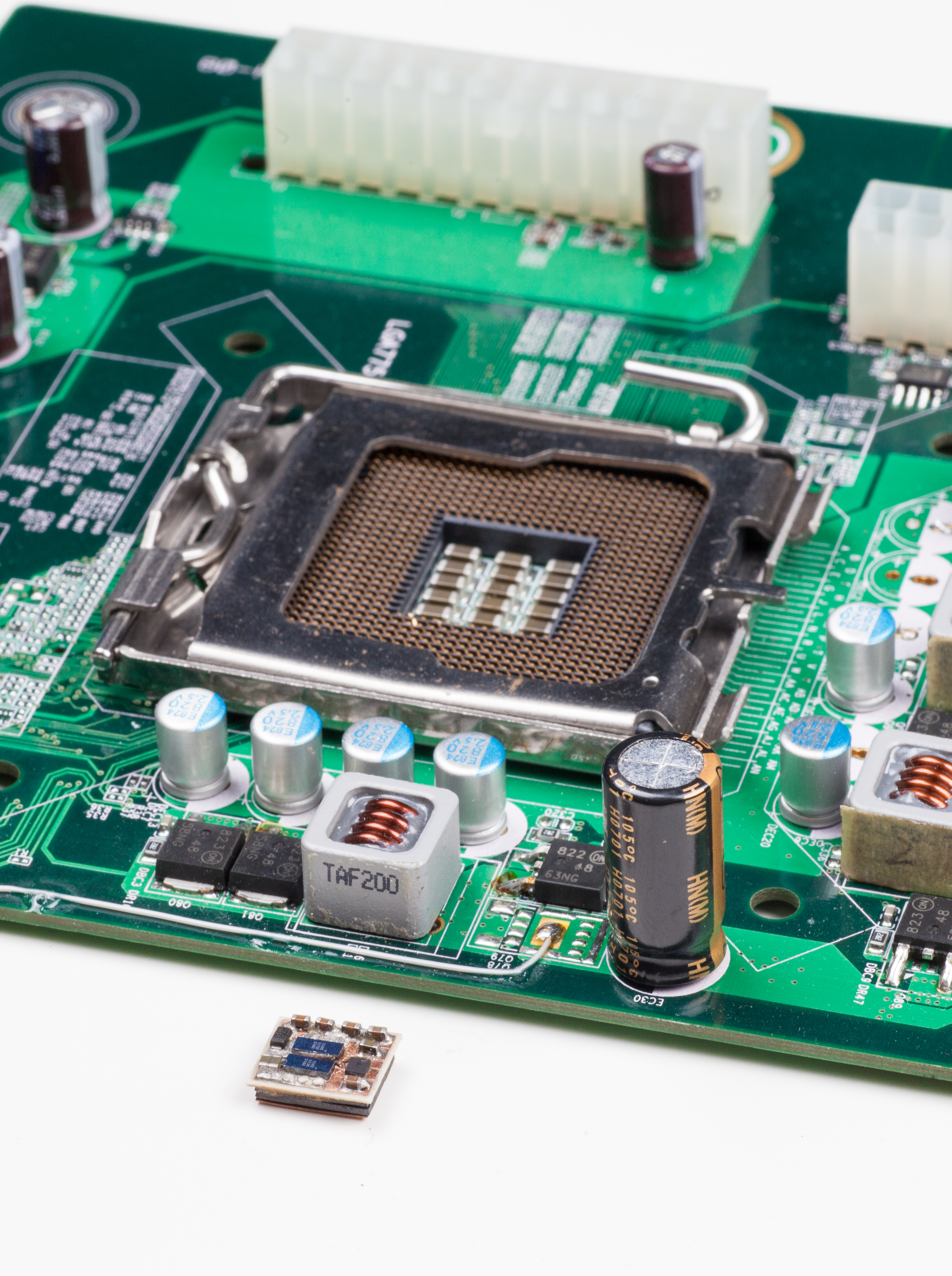Virginia Tech to be university partner in semiconductor innovation institute

Virginia Tech is one of seven university or laboratory partners in the Clean Energy Manufacturing Innovation Institute announced recently by President Barak Obama.
The $140 million institute, headquartered at North Carolina State University, is charged with inventing the technology and manufacturing processes for power electronics devices based on wide bandgap semiconductors.
Power electronics devices are used by almost all modern electrical devices -- from cell phones to electric cars -- and by the equipment controlling the power grid. Using inverters and converters, power electronics converts electricity into the voltage and current needed by the device.
Today's power electronics devices are not 100 percent efficient and some energy is lost as heat during the conversion process. Improving power electronics efficiency could cut U.S. electrical energy consumption significantly, according to Fred Lee, professor of electrical and computer engineering and director of Virginia Tech's Center for Power Electronics Systems.
For more than 50 years, electronics devices have been built using silicon. As devices have shrunk and become faster, the technology is reaching the limits of silicon and researchers are seeking alternative materials and technologies.
A promising technology for improving power electronics efficiency is wide bandgap (WBG) semiconductor devices. WBG semiconductors operate at high temperatures, frequencies, and voltages and could significantly increase the switching frequency and reduce power losses in power conversion processes.
Virginia Tech will lead the power electronics research and applications thrust of the Clean Energy Manufacturing Innovation Institute. Lee, center co-director Dushan Boroyevich, associate professor Rolando Burgos, and assistant professor Qiang Li, also of electrical and computer engineering, will tackle wide bandgap applications in power electronics systems involving silicon carbide (SiC) and Gallium nitride (GaN).
Virginia Tech will receive $3 million across a five-year period.
The institute is the first of several that will form the National Network of Manufacturing Innovation. Each institute will serve as a regional hub designed to bridge the gap between applied research and product development, by serving as a "teaching factory" to train students and workers and providing shared assets to companies.
In addition to university and laboratory participants, 18 different industrial partners will contribute expertise and resources to the effort.
Alex Huang, professor of electrical and computer engineering at North Carolina State University, led the successful proposal effort. Huang currently serves as director of the National Science Foundation Engineering Research Center, the FREEDM Systems Center.
From 1994 to 2004, Huang was on the electrical and computer engineering faculty at Virginia Tech and served as a technical lead at the Center for Power Electronics Systems.
The institute will receive $70 million from the Department of Energy in the next five years, an amount that will be matched through a combination of funds from the businesses and schools involved, along with at least $10 million from the state of North Carolina.
In addition to North Carolina State and Virginia Tech, the partner universities and laboratories are Arizona State University, Florida State University, the University of California at Santa Barbara, the National Renewable Energy Laboratory, and the U.S. Naval Research Laboratory.
The 18 company partners include ABB, APEI, Avogy, Cree, Delphi, Delta Products, DfR Solutions, Gridbridge, Hesse Mechatronics, II-VI, IQE, John Deere, Monolith Semiconductor, RF MicroDevices, Toshiba International, Transphorm, USCi, and Vacon.




